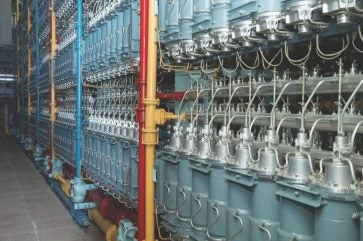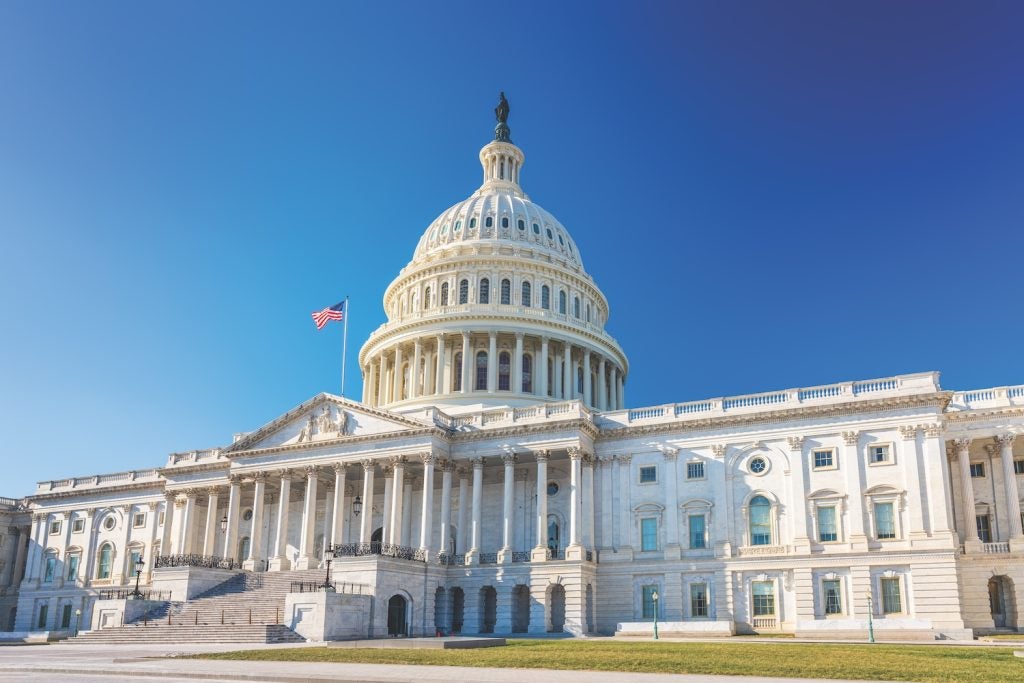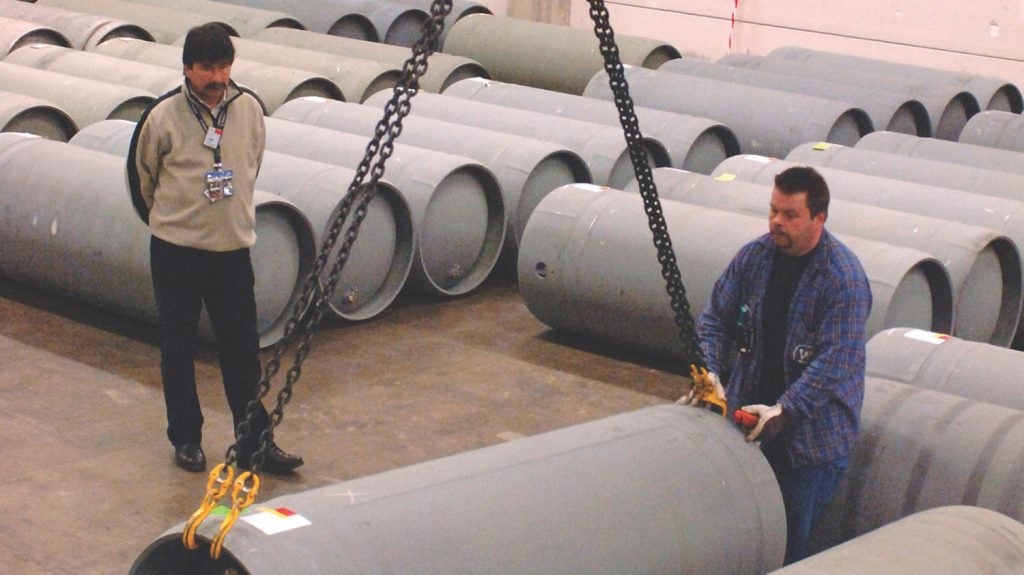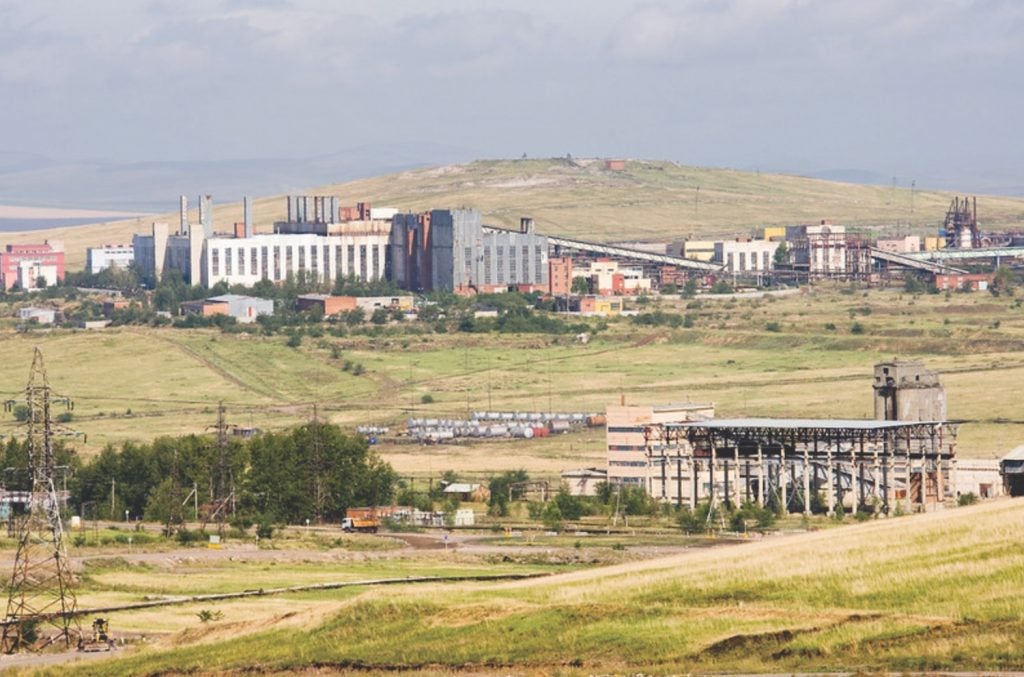
On 30 April, the US Senate passed the Prohibiting Russian Uranium Imports Act (HR 1042). On 13 May, President Biden signed it into law. The Act will come into force 90 days after its signing and will be effective until the end of 2040.
The Act bans import into the US of “unirradiated low-enriched uranium – uranium that has not been in a reactor – that is produced in Russia or by a Russian entity” as
well as “unirradiated low-enriched uranium that has been swapped for the banned uranium or otherwise obtained in a manner designed to circumvent the ban’s restrictions.”

Waivers allowing some Russian uranium imports will be available until January 2028. The US Department of Energy (DOE) says a waiver will be granted if “(1) no alternative viable source of low-enriched uranium is available to sustain the continued operation of a nuclear reactor or a US nuclear energy company, or (2) importation of the uranium is in the national interest.”
The ban follows various restrictive measures involving the US energy sector in response to Russia’s full-scale invasion of Ukraine in 2022, but previous attempts to include the nuclear sector, such as March 2022’s S.3856 – a bill to prohibit the importation of uranium from the Russian Federation – failed to develop legs.
It is well understood that this slow response has largely been driven by heavy US dependence on Russian uranium and enrichment services. As one industry insider said, the US is “totally addicted to Russian uranium, and it’s almost impossible for it to become un-addicted.” As the House Committee Report for the Act acknowledges, Russian state-owned nuclear company Rosatom and its subsidiary Tenex supply over 20% of the enriched uranium used in US reactors. But as the war in Ukraine drags on, the West has seen a booming Russian nuclear sector and even its expansion into new markets – and US momentum for banning Russian nuclear-related imports has grown apace.
In addition to low-enriched uranium (LEU, enriched up to 5% uranium-235) which largely fuels the world’s current light water reactor fleet, also at issue is high-assay low- enriched uranium (HALEU), enriched to over 5% and up to 20%. HALEU is the fuel on which many advanced and small modular reactor (SMR) designs are based, and it is currently commercially supplied only by Russia, although China can produce it and US-based Centrus Energy began generating it from a demonstration cascade in 2023.


Orono: Restart, reuse, recycle
France-headquartered uranium enricher Orono is exploring a number of ways to boost its uranium output and otherwise prepare for an uncertain future. In February the group signed a MOU with sustainable energy firm Shine Technologies to develop a US pilot plant designed to recycle used nuclear fuel from light water reactors. The recovered material can be reused in the fabrication process for new fuel for both existing and advanced reactor designs. (Previously, in December 2023, Orono announced that it would supply enriched uranium to Canadian utility Ontario Power Generation to power Canada’s first SMR project, GE Hitachi’s BWRX-300 SMR1 reactor.)
Orono and Canadian exploration and development company Denison Mines also announced plans earlier this year to restart Saskatchewan’s McClean Lake uranium mine, where operations were suspended in 2008 in response to declining uranium prices, Orano said in a statement. The two companies have formed a joint venture, the McClean Lake Joint Venture (MLJV), with Orano Canada as operator with a 77.5% stake and Denison with a 22.5% share. The JV will use its own patented Surface Access Borehole Resource Extraction (SABRE) mining technology, with work planned to begin in 2025 and to produce around 800,000 pounds (363,000kg) of U3O8, Orano said.

Both Denison President and CEO David Cates and Jim Corman, President and CEO at Orano Canada, cited uranium prices as a determining factor in their decision to restart the McClean Lake facility. Corman termed the move “a return to a focus on growth” and said it was the result of “a long- term investment in R&D… to secure continued activities at the McClean Lake operation well into the future”, adding that the McClean Lake mill is expected to have sufficient capacity to process the ore.
Urenco: Ramping up capacity
Responding to the broader uptick forecast in nuclear generation, in July 2023, global nuclear fuel consortium Urenco had already announced an expansion of its enrichment capacity at its UUSA site in New Mexico. This expansion included the addition to an existing plant of ‘multiple’ new centrifuge cascades, which the company said will provide an additional capacity of around 700 SWU per year, a 15% increase. The first of these new cascades is scheduled to come online in 2025. While the announcement cited ‘the changed geopolitical situation’ and ‘new commitments from US customers for non-Russian fuel’ as among the drivers of increasing customer demand, it also emphasised that the move is part of ‘a long-term plan to extend and refurbish enrichment capacity at our sites.’
Mary Neumayr, Director of Government Affairs at Urenco USA, notes that the ban was pre-dated by significant US momentum to strengthen the domestic nuclear fuel cycle, and that Urenco’s recent moves take place against a backdrop of ‘strong bipartisan support’ for this focus. As the nation faces an election year, the policy clarity that comes with solid support from both sides of the increasingly polarised political spectrum is crucial for business confidence. Neumayr notes that the Act “is part of a number of bills that have been passed during this Congress,” reflecting ongoing and “very strong support for strengthening the supply chain [and] helping to ensure adequate fuel supplies going forward.” For instance, Congress also recently passed, as part of the National Defense Authorization Act, the Nuclear Fuel Security Act (HR 1086), which “establishe[d] new programmes and expand[ed] existing programmes to increase domestic supplies of certain types of low-enriched uranium”. In addition, US$2.7bn in new funding was part of the DOE appropriations bill passed earlier this year.
Neumayr does add, however, that “as the industry is moving away from Russian supply, Urenco has seen an uptick in business”. The company has responded by “working on optimising our operations, including reversing some underfeeding to meet customer demand, and also on restructuring some of our contracts so that if there are excess inventories, we have access to those,” she says.
“One of the key steps that we have taken has been to work on ramping up the supply chain for centrifuges, [which] requires significant investments. Since 2022 we have been working towards ramping up these investments with the centrifuge manufacturer, and working to be in a position to be able to receive new centrifuges to add to our existing facilities. We’ve also reactivated our centrifuge assembly building in New Mexico to be in a position to be able to assemble the centrifuges and install them at our site,” Neumayr notes.
Earlier this year Urenco responded to a request for proposals from the Department of Energy to acquire HALEU enrichment services as part of its HALEU Availability Programme, while in the UK, this month the government announced a grant of £196m ($249m) to Urenco to support the construction of an advanced fuels facility at its Capenhurst enrichment site in England. According to Neumayr, the company is “following a dual-track approach in both the UK and in the US, so we have an interest in the potential – subject to market demand – and contracts to build a HALEU facility in the US as well.” She also noted that “we use our existing facilities, and we’re currently in a licencing process at our New Mexico site, to go up to 10% enrichment levels.”
ASP Isotopes: Beating the clock
Paul Mann, CEO/CFO at enrichment company ASP Isotopes, says the US ban “hasn’t affected our plans one bit”. The company’s goal, he says, “has always been to build multiple HALEU facilities in multiple countries to produce the HALEU the world needs to power the reactors of the future”. To this end, Mann says, ASPI is on track to construct its first stable isotope enrichment facility outside its primary location in South Africa (where its first isotope facility has just begun commercial production), which Mann confirms will be in Iceland.
Mann says the difference between ASPI’s enrichment plants, which use proprietary technology based on quantum-mechanical principles, and ‘traditional’ enrichment plants lies in a more or less nimble response to market conditions. “When you look at the current prices of nuclear fuel supply chain components,” he explains, “uranium ore, yellowcake, are up fivefold in the last 18 months or so; conversion costs are up three- to fivefold, and the enrichment cost, dollar per SWU, is up threefold. There hasn’t really been a supply-side response to that – and that shows you how hard it is to build new capacity in this industry.”
ASPI’s plants, Mann says, “are much smaller and simpler” compared to other designs. “We believe we can build a plant in less than two years for a lot less capital. We can build an enrichment facility much faster; that’s why we have large US multinationals wanting to fund us. All we need is the green light to go and build the plant.”
SMRs, he adds, “are really critical because they will enable cheap energy to the world and allow us to have a slight chance of meeting 2050 climate goals.” SMRs will “bring nuclear engineering onto production-line economics and collapse the cost of building a nuclear reactor”. But in the meantime while SMR technology is commercialised, “the best-case scenario is that we muddle along, managing to get waivers to keep importing some Russian uranium, and the power grid keeps going – and then maybe, by mid-2030, we start to see some SMRs come through.”
Mann also points out that there is further risk involved in dependence on the Russian nuclear supply chain. “It’s not just uranium that the US imports. Every PWR has a tablespoon of lithium-7 salt in it to maintain the pH – and all that lithium-7 salt comes from Russia. If Russia decides to stop supplying the lithium-7 salt, [those reactors] may have to shut down.”
Madison Metals: “Miners will benefit greatly”
Duane Parnham, Executive Chair, CEO and Director at Canadian mining firm Madison Metals, says junior miners and producers in the uranium space “will be watching closely for the outcomes” of the current geopolitical plays.
“The US ban and Russia’s war in Ukraine have heightened supply chain sensitivities, potentially driving increased demand for alternative sources of uranium like ours, which are located in geopolitically stable countries (Namibia and Canada),” he notes. “Traditionally the global uranium market has enjoyed easily accessible and cheap uranium in the short term. Now with sanctions on Russia through the US bill, supply/demand imbalances are projected and emphasis will now be on medium to longer-term contract delivery and pricing.”
The bill means the US will “scramble to secure new supply lines,” he says, “not only for yellowcake but for registered conversion facilities. For explorers, this will be instant gratification. Funds spent directly into development can be realised rather quickly, whereas the conversion bottleneck takes more capital, planning, permitting etc.
In addition, miners will need to increase production and developers will need to find new deposits and build new mines now to meet this growth and longer-term demand.”
Madison Metals, he says, “can fast-track production to meet the new levels of demand. In addition, our future production is uncommitted, so we can sell at today’s spot price. Expect further supply chain disruption and increased spot conversion and swap prices. Miners will benefit greatly. No doubt, it will be interesting to see how this plays out for our sector,” Parnham concludes.
NexGen: Playing the long game
Like other fuel cycle executives, Travis McPherson, CCO at Canadian uranium mining company NexGen, takes a wider view. McPherson sees the US ban as the result of an east-west split which, he believes, will continue to grow, and which is significant in driving current critical mineral strategies.
“I think [the split] was really brought to the front by Covid and all of the supply chain challenges around it,” he says, “and then, on top of that, you have a desire by Western policymakers and the general public to establish sustainable supply chains onshore or with allies.”
Asked if the US is ready for the ban, McPherson says “they’re ready with what they’ve proposed, which is to enable waivers through to 2028. They only produced 82,000 pounds [37,000kg] of uranium in the country in Q1/2024 and have limited nuclear fuel supply chain capacity… If Russia retaliates that could be a big, big problem because obviously the US is [phasing out Russian uranium] in a controlled fashion that doesn’t turn the lights off – but if Russia retaliates, there’s a risk of that happening, not overnight but in a relatively short timeframe.”
Most of the nuclear fuel cycle, McPherson argues, is “quite easy to fix – it just takes money and permits and a little bit of time”. With uranium, though, exploration firms “have to have a lot of luck. You have to get all of the stakeholders involved, get buy-in from local communities, go through the detailed engineering process. Capital markets have to be there so you can fund all of this – and then you have to build a mine.” This part of the fuel cycle hasn’t received a lot of government focus yet, he says, but “being in that side of the business, I can tell you it is the part that needs the attention, and it’s the side that isn’t in the control of any policymaker or government official.”
A mine that can be ramped up or down to adjust to market conditions is strategic and unique, McPherson says, since “markets are either over- or undersupplied, and we don’t have that crystal ball so being able to ramp our mine up or down will ensure optimisation of market dynamics”. NexGen’s Rook I project “has the potential to do that now”, he says.
McPherson adds that utilities looking ahead to 2028-29 and beyond can reasonably foresee a world “where aboveground inventories are lower, or still low.” NexGen’s recent $250m uranium procurement deal with MMCap International, he says, was designed to optimise current contract negotiations given that the US ban will affect both utilities’ uranium supply forecasts “and their thinking about supply post-2028, when the waivers are done”. Utilities “are not particularly confident,” he says, “that if there are hiccups to their supply forecasts, they’ll be able to source uranium from the spot market or from on-hand inventories, because those don’t really exist anymore – and it doesn’t look like there’s going to be a big restocking of inventories between now and then.”
Outlook: “Bleak” or business as usual?
Several industry insiders speaking off the record said that the nuclear power generation scenario for the US post-2028 now looks, as one put it, “pretty bleak”, and that keeping America’s lights on may prove challenging without access
to Russian LEU. But many companies along the nuclear fuel cycle seem to view the ban as a mere bump in the business- as-usual road.
Indeed, Timothy Matthews, Alex Polonsky and Scott Clausen of global law firm Morgan Lewis, which advises companies across the fuel cycle and power generation spaces on fuel supply contracts as well as other risk and regulatory issues, said in a May brief that non-Russian sources of uranium and enrichment services plus a revitalised domestic fuel sector “should eventually blunt any significant impacts from the Act on the US nuclear industry.”
The ban’s potential negative effects are “not expected to be significant in the short term,” Morgan Lewis said, due to the industry’s efforts – in anticipation of a US ban, a Russian export ban, or both – to acquire uranium from non- Russian sources: “Thus, the cost of a possible disruption may already be reflected in uranium pricing.” The law firm also noted that since US reactors’ fuel inventories only need replenishing every 18-24 months, most should be covered in the short term – although “Even so, assuring that material has been delivered to the US may be important.”
In the medium term, however, the ban could have a more significant impact given the waiver programme’s planned termination in 2028, when any fuel that’s currently stockpiled will likely have run out as well. Under such conditions, companies can try to obtain LEU from the DOE’s reserves under the American Assured Fuel Supply (AFS) programme, described by the DOE as designed “to serve as a backup fuel supply for foreign recipients to be supplied through US persons, or for domestic recipients, in the event of a fuel supply disruption.”
The DOE says it is “committed to making the AFS available to eligible recipients in the case of supply disruptions in the nuclear fuel market” – but Morgan Lewis notes
that such access will only be granted if DOE decides that a “fuel supply disruption that cannot be addressed by normal market mechanisms” has occurred. And, since the programme has never actually been accessed, the time it would take for DOE to grant a request is another big unknown.
Also unknown, the Morgan Lewis authors concluded, is the long-term impact of the US ban, although they pointed to its potential for positive impact in encouraging the growth of a domestic fuel cycle. But whether demand will be high enough, and import restrictions will bite hard enough, to prompt the necessary capital commitment and facility expansion “remains to be seen”. Further US policy support, the law firm said, may ultimately be needed to keep the lights on.






